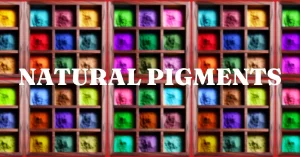In the bustling streets of Edo, Japan (now Tokyo), during the Edo period, an extraordinary form of art emerged, known as Ukiyo-e. Ukiyo-e, which means “pictures of the floating world,” beautifully captured the essence of daily life, entertainment, and nature in Japan. These artworks, offer us a fascinating glimpse into what Japan was like centuries ago. Let us explore the Japanese Ukiyo-e Art Movement.
What type of art was created during the Ukiyo-e movement?
Print art, illustration, paintings, (Illustrations made both in block print and paintings) were the nature of artworks made in the Ukiyo-e movement.
Ukiyo-e art was created and popular during which years?
Ukiyo-e began in the late 16th until the 19th century.
Where was Ukiyo-e art made and popularised?
Ukiyo-e began in Japan and spread across China and East Asia.
What medium (media) and tools were used to make Ukiyo-e Art?
Ink, woodblock stamps, dye, paint, canvas, handmade paper etc. were materials used to make Ukiyo-e art.
Who are some famous Ukiyo-e artists and artworks?
Shibai Uki-e – Floating World (1741–1744)

Shinagawa on the Tokaido by Katsushika Hokusai (1760-1849)

The Great Wave off Kanagawa by Katsushika Hokusai (1831)

Which art movement(s) came before the Ukiyo-e?
Hanging scrolls from the Kanbun era were arguably the inspiration that led to the Ukiyo-e movement.
Which art movement(s) came after the Ukiyo-e?
The fine outlines and mild colour palettes with just one or two stand-out colours in modern Manga comic strips bear similarities to Ukiyo-e
Interesting observations about the Ukiyo-e art movement
A Tale of Woodblocks and Colours
Creating a Ukiyo-e print was no easy task. It was a tedious process that involved a team of artists and craftsmen. The first step was the design. An artist would paint the original artwork on paper, often using ink and colours made from natural materials. This painting would then be handed over to a skilled woodblock carver.
The woodblock carver’s job was to take this intricate painting and carve it onto a wooden block. Each colour in the artwork required a separate block. Imagine the precision it took to carve the fine lines and details, all in reverse because it would transfer like a mirror image onto the canvas. Once the blocks were ready, it was the printer’s turn.
The Magic of Printing
Printing a Ukiyo-e print was like performing a carefully choreographed dance. Each block, with its unique colour, had to be precisely aligned with the paper. The printer would apply ink to the woodblock, then lay a sheet of paper on top and rub it to transfer the image. This process was repeated for each colour, layering them one by one.
The result was a vibrant and detailed image that seemed to come alive. Ukiyo-e prints often featured dramatic contrasts of colour and delicate shading, showcasing the skill of the artists and craftsmen involved.
Kabuki, Geisha, and the Floating World
Many Ukiyo-e prints depicted scenes from the theatre, particularly Kabuki. Kabuki was a form of Japanese theatre known for its elaborate costumes and dramatic performances. These prints allowed people who couldn’t attend the theatre to get a taste of the excitement and glamour.
Geisha, the elegant and highly skilled entertainers of the time, were another favourite subject. Ukiyo-e prints portrayed them in various settings, from tea houses to cherry blossom festivals. These prints not only celebrated the beauty of geisha but also offered a window into the world of the pleasure districts.
Cherry Blossoms and Nature’s Beauty
The changing seasons and the beauty of nature were recurring themes in Ukiyo-e art. One of the most beloved subjects were cherry blossoms. In Japan, cherry blossoms (sakura) have a profound cultural significance, symbolising the fleeting nature of life. Ukiyo-e artists captured the delicate and transient beauty of cherry blossoms in their prints, often depicting people enjoying Hanami, the tradition of flower viewing.
The Great Wave Off Kanagawa
No discussion of Ukiyo-e art would be complete without mentioning one of the most iconic images in the history of art – “The Great Wave off Kanagawa” by Katsushika Hokusai. This masterpiece is part of Hokusai’s series “Thirty-Six Views of Mount Fuji.”
The print depicts a colossal wave threatening the boats near Mount Fuji. The sheer power and majesty of the wave, combined with the serene presence of the mountain in the background, create a breathtaking contrast. “The Great Wave” has become a symbol not only of Ukiyo-e but also of Japanese art as a whole. Its influence can be seen in various art forms worldwide.
Ukiyo-e and the West
In the late 19th century, Japan opened up to the world after centuries of isolation. Western artists, including Vincent van Gogh and Claude Monet, were deeply inspired by Ukiyo-e prints. They admired the bold compositions, unusual perspectives, and vibrant colours.
Ukiyo-e’s influence on Western art, known as Japonisme, is evident in some of the most celebrated works of Impressionism and Post-Impressionism. It’s fascinating how a traditional Japanese art form left an indelible mark on the Western art scene.
Preserving the Legacy
Despite the passage of centuries, Ukiyo-e art continues to captivate audiences worldwide. Museums and collectors carefully preserve these delicate woodblock prints. Their enduring appeal lies not only in their aesthetic beauty but also in the stories they tell about a bygone era in Japan.
Ukiyo-e artworks have fine inky outlines with soft, yet bright colours. The landscape and elements are detailed to look like a balance between realistic and animated scenes. Does this remind you of another famous art form in pop culture? Comics and Manga! While it is not confirmed, art and comic enthusiasts have pointed out similarities between Ukiyo-e and Manga illustrations. Even the animation in Studio Ghibli’s films resembles Ukiyo-e prints. But whether or not the connection between Ukiyo-e and Manga is real, they are both undoubtedly magical forms of illustration.
Ukiyo-e prints transport us to a world of Kabuki actors striking dramatic poses, geisha in elegant kimonos, cherry blossoms in full bloom, and the power of nature in “The Great Wave off Kanagawa.” They are windows to a “floating world” that, through art, continues to captivate and inspire generations of admirers.
*Images from Wiki Commons







0 Comments